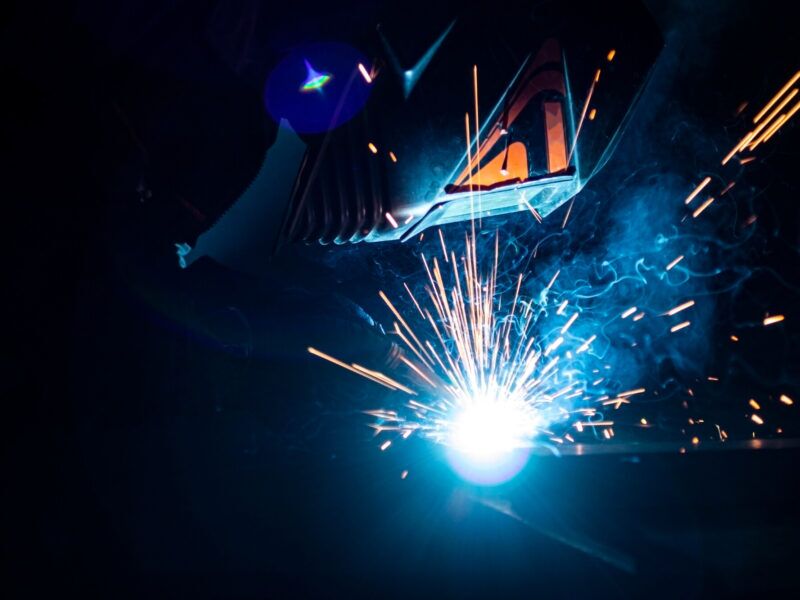Expert Methods for Preventing Weld Undercut Successfully
Expert Methods for Preventing Weld Undercut Successfully
Blog Article
Understanding the Causes and Solutions for Undercut Welding in Metal Fabrication Processes
In the realm of steel manufacture procedures, the event of undercut welding postures a substantial obstacle that requires a thorough understanding of its reasons and sensible remedies. The complex interaction of different aspects during welding operations can lead to this undesirable phenomenon, influencing the architectural stability and general quality of the welded joints - Preventing weld undercut. By dissecting the origin of undercut welding and checking out efficient remedial measures, makers can raise the requirement of their workmanship and ensure the production of remarkable steel elements
Common Reasons For Undercut Welding
Frequently neglected in metal construction, undercut welding happens due to numerous variables that require meticulous attention and competence to be properly mitigated. Additionally, improper welding strategies, such as using the wrong welding angle or take a trip speed, can additionally add to undercut development. The option of welding parameters, such as voltage, present, and cable feed rate, plays a considerable role in the event of undercut welding.
Impact of Incorrect Welding Parameters
Incorrect welding parameters can significantly endanger the honesty and quality of bonded joints in metal fabrication processes. The influence of wrong welding criteria shows up in numerous means, bring about architectural weaknesses and problems in the welded components. One critical facet influenced by incorrect welding parameters is the penetration deepness of the weld. Inadequate heat input due to reduced welding currents or excessively high travel rates can lead to inadequate fusion in between the base metals, leading to insufficient joint penetration and weakened bonds. Alternatively, extreme heat input brought on by high welding currents or sluggish travel rates can result in burn-through and excessive reinforcement, creating a breakable and unsteady weld structure. In addition, inaccurate parameters such as inappropriate voltage settings or wrong electrode angles can add to irregular weld bead accounts, lack of blend, and enhanced opportunities of problems like damaging. For that reason, meticulous interest to welding criteria is critical to make certain the production of high-quality welds with the preferred mechanical residential properties and structural stability.
Effect of Improper Torch Angle
Improper torch angle in welding operations can significantly impact the quality and integrity of the final weld joints in metal fabrication processes. The lantern angle plays an essential role in figuring out the warm input and distribution during welding. When the torch angle is incorrect, issues such as damaging can emerge. Damaging is an usual welding flaw where a groove develops along the weld toe, deteriorating the joint and jeopardizing its structural integrity.
A lantern angle that is also steep can result in insufficient infiltration, insufficient combination, and increased spatter. On the various other hand, a lantern angle that is as well shallow can cause extreme penetration, burn-through, and distortion of the base product. Preventing weld undercut. Appropriate torch angle is essential for ensuring regular weld high quality, strength, and look
To stop undercutting and various other problems brought on by inappropriate torch angles, welders must be educated to maintain the proper torch angle throughout the welding process. Routine monitoring and change of torch angles throughout welding can assist attain sound welds with minimal issues.
Function of Inadequate Welding Strategies

An additional facet of read the article insufficient welding methods is incorrect weld preparation. Inadequate cleaning of the base steels, wrong joint layout, or inadequate edge preparation can all contribute to damage welding. In addition, insufficient protecting gas protection or using the wrong sort of gas can cause insufficient combination and the formation of undercut defects.
To address the duty of insufficient welding techniques in steel construction processes, it is necessary to supply detailed training for welders. Proper education and learning on welding specifications, joint preparation, and protecting gas selection can aid stop undercut welding and ensure high-quality welds in steel fabrication tasks.
Effective Solutions for Undercut Welding
Resolving undercut welding in metal manufacture needs implementing efficient solutions to improve weld quality and architectural integrity. One of the key services to combat undercut is to change welding criteria such as voltage, present, and take a trip speed to make certain appropriate warmth input and fusion. By fine-tuning these setups, welders can prevent extreme melting of the base steel and filler material, minimizing the likelihood of undercut formation.
In addition, proper joint preparation is critical in stopping undercut. Guaranteeing tidy base steel surfaces without contaminants and utilizing the appropriate bevel angle can aid advertise much better weld infiltration and minimize the threat of undercut - Preventing weld undercut. Utilizing appropriate welding methods, such as oscillating the lantern or weaving, can also assist in dispersing warmth evenly and loading the weld joint properly, decreasing the opportunity of undercut defects
Additionally, choosing the right welding consumables, consisting of electrodes and filler steels, is essential in reducing undercut. Utilizing products with proper chemical make-ups and mechanical residential or commercial properties can add to accomplishing sound welds with very little undercut. Routine assessment and high quality control procedures must additionally be carried out to identify and resolve undercut concerns without delay, making certain the total honesty of made steel elements.

Conclusion
To conclude, understanding the reasons and remedies for undercut welding in steel construction processes is essential for achieving high-quality welds. By addressing usual reasons such as incorrect welding parameters, inappropriate lantern angle, and insufficient welding techniques, welders can protect against damaging and guarantee solid, resilient welds. It is necessary to take note of these variables and carry out effective solutions to boost the general welding procedure and last product top quality.

Report this page